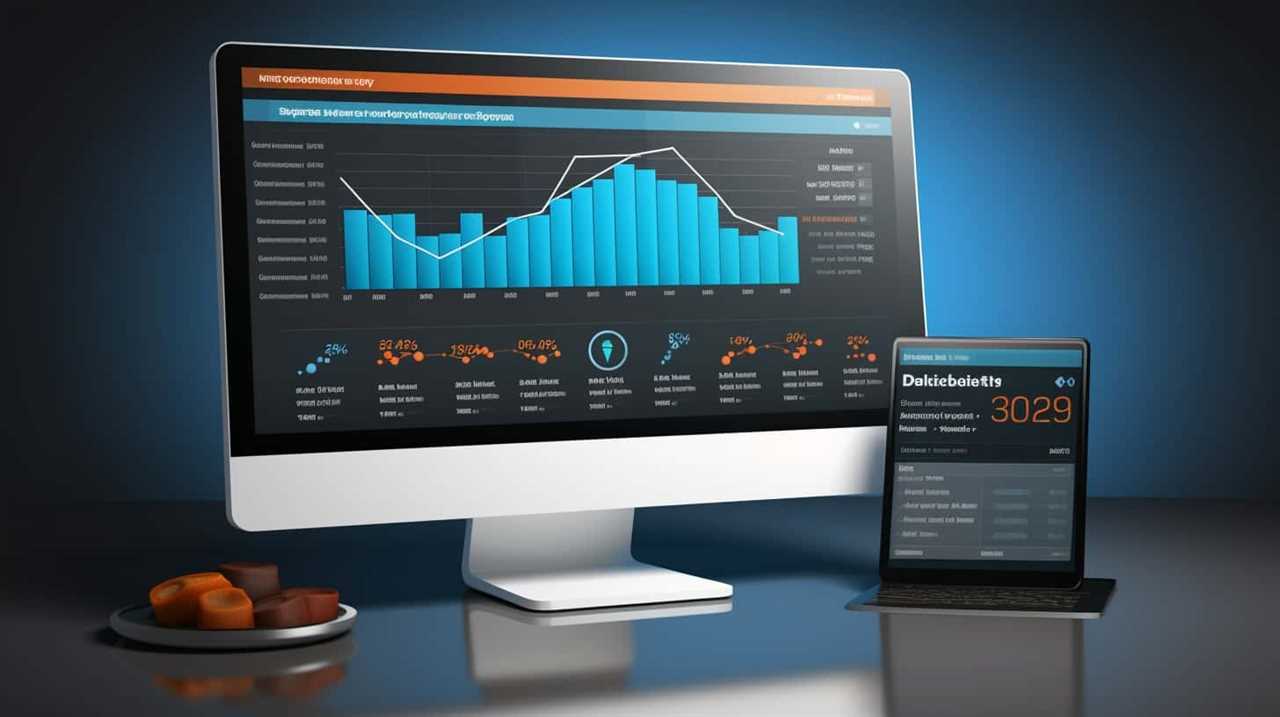Are the links on your website deteriorating and secretly sabotaging your SEO efforts? We’re here to help.
In this article, we’ll delve into the world of link decay and its detrimental impact on SEO rankings. We’ll show you how to identify broken and irrelevant links, as well as provide you with effective strategies to combat this sneaky SEO killer.
With our expert guidance, you’ll learn how to monitor and maintain your link health, ensuring your website stays in top shape.
Let’s conquer link decay together.

Key Takeaways
- Link decay refers to the deterioration of a link’s value over time, which can lead to a decrease in organic search visibility and website traffic.
- Link auditing techniques, such as backlink analysis and broken link checking, help identify and fix broken and irrelevant links.
- Strategies to combat link decay include regularly updating website content, engaging in link building activities, optimizing anchor text with relevant keywords, and promptly fixing broken links.
- Monitoring and maintaining link health through regular audits and removing low-quality links are crucial for strong SEO performance.
Understanding Link Decay
We need to delve into the concept of link decay in order to fully comprehend its impact on SEO. Link decay refers to the gradual deterioration of the value of a link over time. It occurs when a link becomes less effective in boosting search engine rankings due to factors such as broken links, outdated content, or changes in search engine algorithms. Understanding link decay is crucial for maintaining link sustainability and ensuring the long-term success of your SEO efforts.
To combat link decay, it’s essential to regularly monitor and update your links. This process, known as link revamp, involves identifying and fixing broken links, updating outdated content, and optimizing anchor text to improve relevancy. By constantly refreshing your links, you can preserve their value and maximize their impact on SEO.
The Impact on SEO Rankings
To evaluate the effects of link decay on SEO rankings, we analyze the link’s diminishing value and its impact on search engine algorithms.
Here is how link decay affects website traffic and the importance of link building in SEO rankings:

- Link decay’s effect on website traffic: As links decay over time, they become less effective in driving traffic to your website. This can result in a decrease in organic search visibility and ultimately a decline in website traffic.
- The importance of link building in SEO rankings: Link building plays a crucial role in improving SEO rankings. High-quality and relevant backlinks signal to search engines that your website is trustworthy and authoritative. They can help increase your website’s visibility, organic traffic, and overall ranking in search engine results.
Identifying Broken and Irrelevant Links
As we delve into identifying broken and irrelevant links, it becomes essential to pinpoint the sources of link decay and assess their impact on SEO rankings. One of the most effective ways to identify these problematic links is through link auditing techniques. This involves conducting a thorough analysis of all the links on your website to determine their health and relevance. By using tools like Google Search Console or third-party link auditing software, you can uncover broken links, redirects, and low-quality or irrelevant backlinks that may be hurting your SEO efforts.
To make it easier to understand, here’s a table showcasing some common link auditing techniques:
| Link Auditing Techniques | Purpose |
|---|---|
| Backlink analysis | Identify toxic backlinks that negatively impact SEO rankings. |
| Broken link checking | Find and fix broken links that lead to error pages. |
| Relevance assessment | Determine the relevance of backlinks to your website’s content. |
| Anchor text analysis | Analyze the anchor text used in backlinks to ensure it aligns with your target keywords. |
Once you have identified broken and irrelevant links, the next step is to remove them. Removing toxic backlinks is crucial to maintaining a healthy link profile. This can be done by reaching out to webmasters and requesting the removal of the harmful links, or by disavowing them through the Google Disavow tool.
Now that we have identified broken and irrelevant links and discussed the importance of removing them, let’s move on to the next section where we will explore strategies to combat link decay.

Strategies to Combat Link Decay
To combat link decay, one effective strategy is to regularly update and refresh your website’s content. By doing so, you keep your site relevant and engaging to both users and search engines.
Here are four strategies to help you combat link decay:
- Link building techniques: Continually engage in link building activities to attract new links and maintain a healthy backlink profile. Seek opportunities for guest blogging, partnerships, and collaborations to acquire high-quality inbound links.
- Importance of anchor text: Pay attention to the anchor text used in your links. Optimize it with relevant keywords to provide context and improve the link’s value for SEO.
- Monitor and fix broken links: Regularly check your website for broken links and fix them promptly. Broken links can negatively impact user experience and harm your SEO efforts.
- Redirect outdated links: If you have updated or removed content that had inbound links, set up redirects to ensure users and search engines are directed to the most relevant content.
Monitoring and Maintaining Link Health
We regularly monitor and maintain the health of our links to ensure a strong SEO performance. Link auditing techniques play a crucial role in this process. By conducting regular audits, we can identify any broken or low-quality links that may be negatively impacting our website’s ranking.
We use specialized tools to check for broken links, redirects, and other issues. It’s also important to consider the importance of link diversity. Having a diverse range of high-quality inbound links from various sources can help improve our website’s visibility and authority. We strive to acquire links from different domains, industries, and geographies to ensure a well-rounded link profile.

Monitoring and maintaining link health is an ongoing task that requires regular attention and adjustments to maintain a strong SEO presence.
Frequently Asked Questions
How Does Link Decay Affect Other Aspects of Website Performance Besides SEO Rankings?
Link decay not only affects SEO rankings but also has an impact on user experience and website credibility. It can lead to broken links, outdated information, and a lack of trust from users, ultimately affecting overall website performance.
Can Link Decay Be Prevented Entirely, or Is It an Inevitable Part of Website Maintenance?
Prevention is key when it comes to link decay. While it may seem inevitable, implementing effective techniques can significantly reduce its impact. Neglecting maintenance can have long-term effects on website visibility.
Are There Any Tools or Services Available to Help Identify Broken and Irrelevant Links on a Website?
There are several link decay tools and broken link identification services available to help us identify and fix broken and irrelevant links on our website, ensuring its overall health and SEO performance.

Besides Removing or Updating Broken Links, What Other Strategies Can Be Employed to Combat Link Decay?
To combat link decay and improve user experience, we can employ strategic strategies for link building. By creating high-quality content, engaging with influencers, and utilizing social media, we can strengthen our website’s link profile and overcome the challenges of link decay.
How Frequently Should Website Owners Monitor and Maintain the Health of Their Links to Effectively Combat Link Decay?
To effectively combat link decay, website owners should regularly monitor and maintain the health of their links. Best practices for link monitoring frequency ensure a positive user experience and prevent the silent SEO killer.
Conclusion
In conclusion, link decay is a ruthless SEO assassin that silently diminishes our rankings. Broken and irrelevant links lurk in the shadows, waiting to sabotage our website’s visibility.
But fear not! By identifying and eliminating these treacherous links, we can fight back and reclaim our rightful place at the top. With vigilant monitoring and maintenance, we can ensure our link health remains robust and our SEO efforts flourish.

Let’s stay one step ahead and conquer the battle against link decay!









